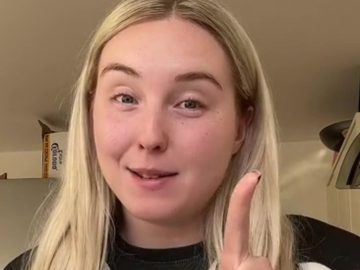Investing is a topic you can find just about everywhere these days, whether it’s in a book, on TV or even in a TikTok video. But all this information doesn’t necessarily make it easier to know how to invest money.
So, if you’re new to it or just want to broaden your horizons, here are X tips to get you started – along with expert insights.
1. Think about your overall investing goal
Investing can be a way to increase your wealth but it does come with risks. So being clear about the reason that you want to invest can help you make more informed decisions about how you invest your money.
“The first place I encourage all new investors to start is determining your goal for investing, or what I call your ‘why’,” says Glen James, host of the this is money podcast and author of The Quick-Start Guide to Investing.
“Do you have a specific goal? Keep in mind that investing is best suited to goals that are 5+ years into the future. Anything shorter than that, you’re better off saving money in the bank.”
2. Set your budget for investing
How much you have available to invest helps determine the types of investment you make. This can also have a big influence on the overall outcome.
“It’s crucial to have a strong spending plan or budget that works and sets aside consistent amounts of money for investing, as once you start investing you want to maintain a rhythm without interruption,” Glen says.
“Investing is easy, staying invested is hard for many.”
So, having a clear plan for how much you’ll invest (and how often) can help you stay on track for your goals.
3. Choose what type of investments you want to make
Once you have your goal and budget, you can start to think about what type of investments will suit them.
“Would you prefer to invest in Exchange Traded Funds (ETFs), or single shares of specific companies you’d like to hand-pick? ETFs provide instant diversification and more all-in-one options, whereas single share investing takes more time and research before setting up a more boutique portfolio,” Glen says.
Financial educator and co-author of How to Not Work Forever, Ana Kresina,adds that getting started is often “the biggest hurdle”.
“Analysis paralysis is a real thing when it comes to investing. It can be overwhelming deciding which broker to go with, what ETF to purchase, or how much money to invest,” she says.
“No one learns to ride a bike by reading books and listening to podcasts, instead, you need to get on the bike to actually ride it. The same goes with investing.
“Once you have a decent grasp on the basics, by dipping your toes into the investing world, you can learn, build confidence, and adjust your strategy as needed.”
Different types of investments
Technically, an investment could be as simple as a savings account or as detailed as a mutual fund or managed portfolio.
Most investments broadly fall into one of five categories:
- Cash: Typically bank accounts, including savings and term deposits.
- Fixed interest: Such as bonds, debentures and capital notes.
- Property: You can earn income through rent on a residential or commercial property. You could also earn money by selling property at a higher price than what you paid for it (known as “capital growth” or “gain”).
- Shares: Where you invest in a company or companies. Portions of shares can also be grouped together through managed funds, including exchange-traded funds (ETFs).
- Alternative investments: This covers everything else and could include commodities, infrastructure or private equity.
If you’re not sure where to start, you may want to go over the basics first. The government’s Money Smart website has details on different types of investments and how they work, which can help you understand your options.
 Senior couple using laptop while planning their home budget,
Senior couple using laptop while planning their home budget,
Happy senior couple going through home finances and using computer at home.
4. Start small and build up investments over time
Different types of investment have different levels of risk, so starting small when you’re a beginner helps reduce the potential financial cost if something goes wrong.
“The good news is there are many investment apps and platforms that make investing easy to get started, even with $10,” Glen says.
He adds that most people who are working “already have a long-term investing account that you can add money to easily: superannuation.”
“The catch is this money is tied up until you’re no longer working and over age 60, but there are tax advantages as a trade-off.”
Superannuation is also an example of the role compound interest can play in helping to increase your wealth.
“Compound interest is your money making money on the interest it’s earned,” Ana explains.
“One of my favourite examples of compound interest is this: if you invest $100 per week, you could be a millionaire in 40 years. Over the 40 years, you would have contributed $208,000 but with an average return of 7% each year, you would end up with $1,038,103 after 40 years. That’s $830,103 more just from investing rather than saving.”
Keep in mind that this is a general example. You could check your superannuation statements or even your savings account statements to get a sense of how compound interest may already be working for your money.
“This is why investing early and often, allowing your money to compound, is a great way to build wealth,” Ana says.
5. Seek financial advice
Remember, any investment you make has some level of risk.
Ana says it’s important to remember that “past performance isn’t indicative of future returns” for investments.
So if you’re unsure, it’s a good idea to get more information.
“Please consult a financial advisor before investing any money,” she says.
The Australian Stock Exchange (ASX) also has a range of free resources, including online courses you can take to learn more about different investing options.
You can also get general information online through the government’s Money Smart website.
Disclaimer: Any information here is general in nature and has been prepared without considering your personal goals, financial situation, or needs. Because of this, before acting on the general advice, you should consider its appropriateness, having regard to your unique situation. You should obtain and review the Product Disclosure Statement (PDS) and Target Market Determination (TMD) relevant to the product before making any financial product decisions. It’s also strongly encouraged to seek the advice of a professional financial adviser.
![]()
Amy Bradney-George
Sign up for our newsletter
Want 20% off at THE ICONIC? Sign-up to the latest news from Australian Women’s Weekly
Disclaimer: By joining, you agree to our Privacy Policy & Terms of Use





